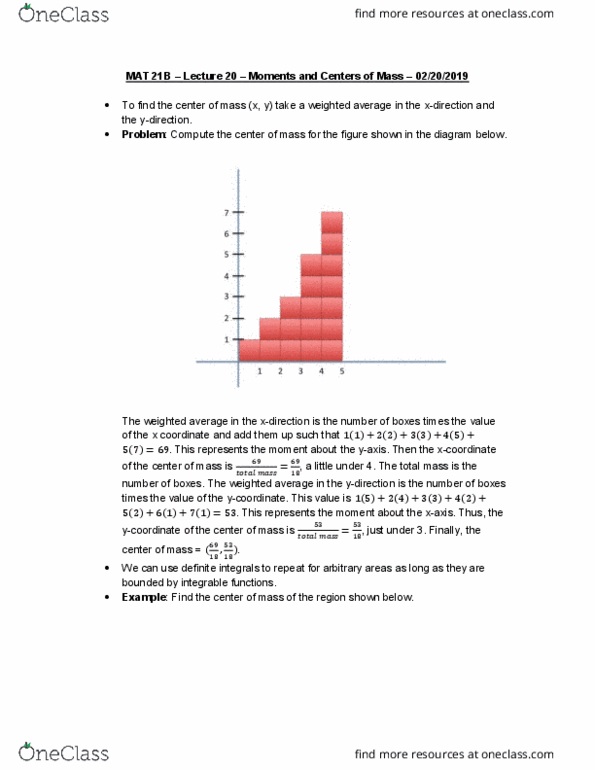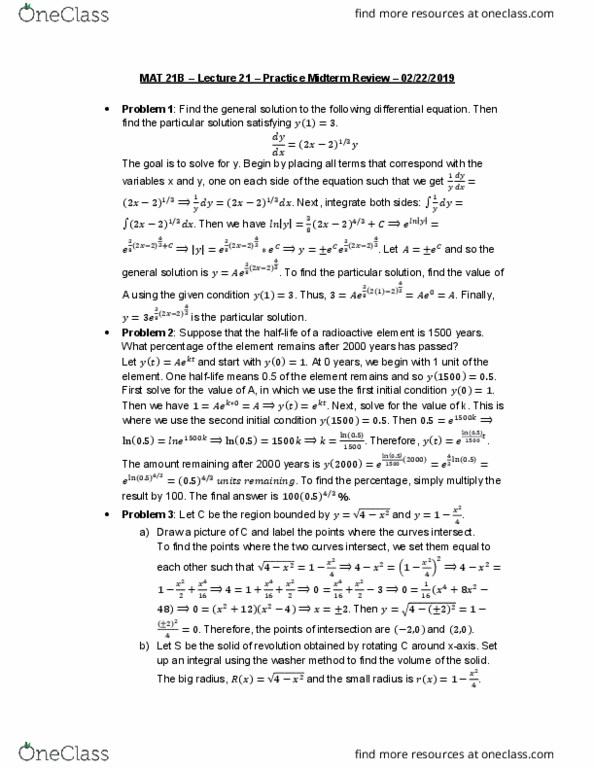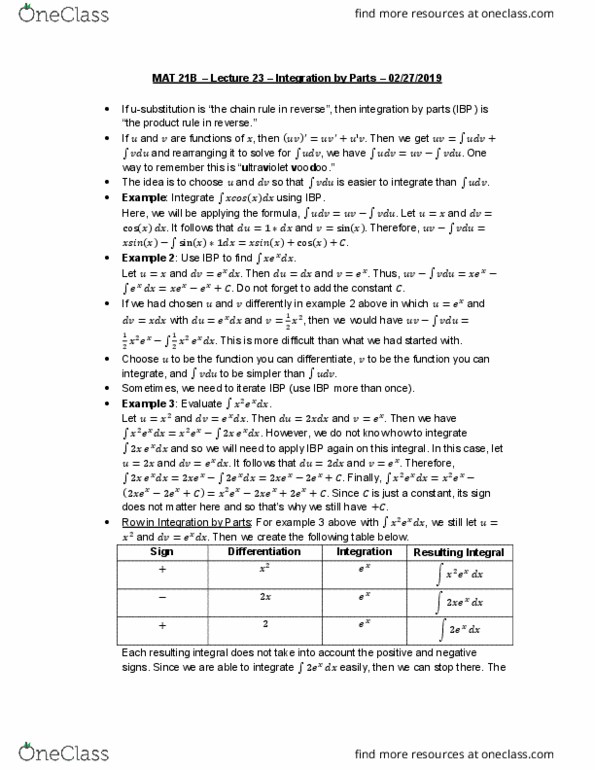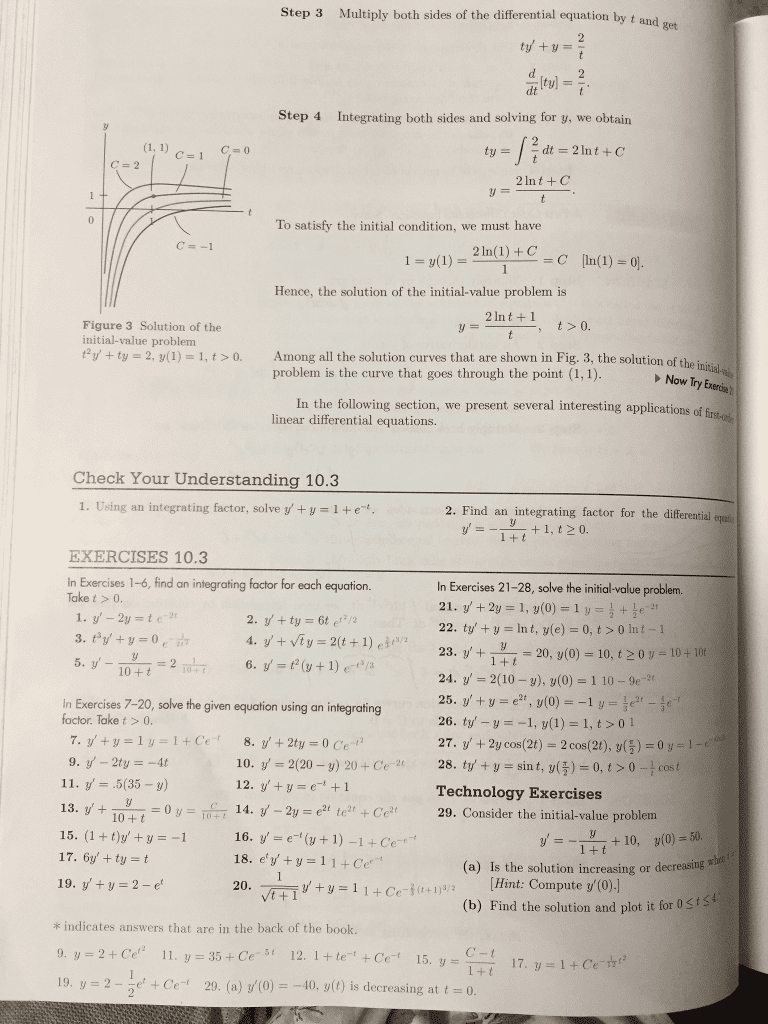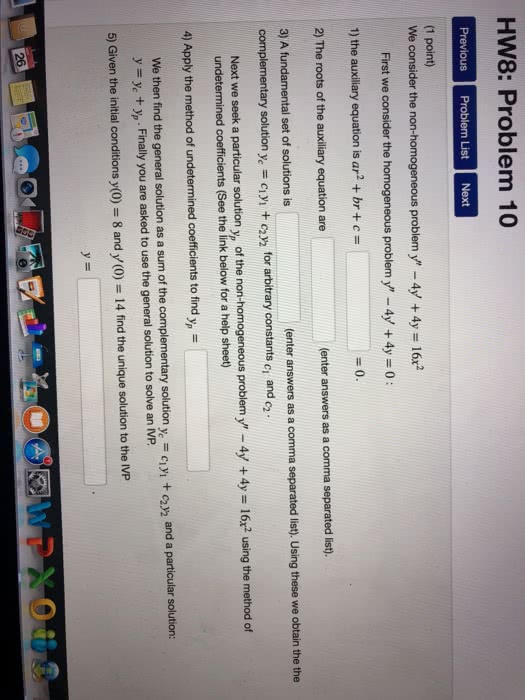MAT 21B Lecture 21: MAT 21B – Lecture 21 – Practice Midterm Review
MAT 21B verified notes
21/30View all

MAT 21B – Lecture 21 – Practice Midterm Review – 02/22/2019
• Problem 1: Find the general solution to the following differential equation. Then
find the particular solution satisfying .
The goal is to solve for y. Begin by placing all terms that correspond with the
variables x and y, one on each side of the equation such that we get
. Next, integrate both sides:
. Then we have
. Let and so the
general solution is
. To find the particular solution, find the value of
A using the given condition . Thus,
. Finally,
is the particular solution.
• Problem 2: Suppose that the half-life of a radioactive element is 1500 years.
What percentage of the element remains after 2000 years has passed?
Let and start with . At 0 years, we begin with 1 unit of the
element. One half-life means 0.5 of the element remains and so .
First solve for the value of A, in which we use the first initial condition .
Then we have . Next, solve for the value of k. This is
where we use the second initial condition . Then
. Therefore,
.
The amount remaining after 2000 years is
. To find the percentage, simply multiply the
result by 100. The final answer is .
• Problem 3: Let C be the region bounded by and
.
a) Draw a picture of C and label the points where the curves intersect.
To find the points where the two curves intersect, we set them equal to
each other such that
. Then
. Therefore, the points of intersection are and .
b) Let S be the solid of revolution obtained by rotating C around x-axis. Set
up an integral using the washer method to find the volume of the solid.
The big radius, and the small radius is
.
